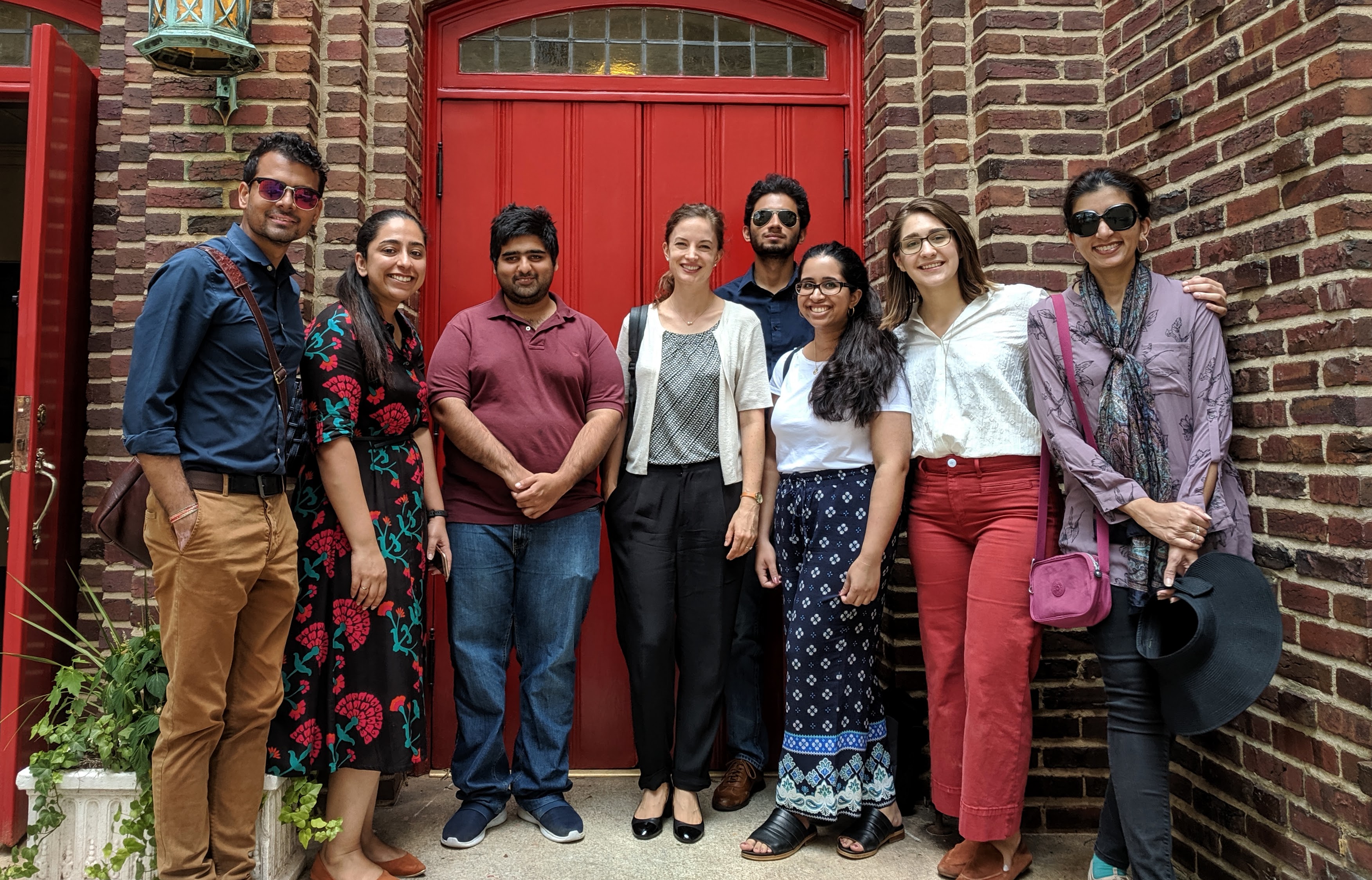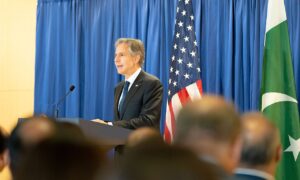
Elizabeth Threlkeld is the Deputy Director of the South Asia Program at the Stimson Center. She worked abroad for the past decade, most recently as a Foreign Service Officer in Pakistan and Mexico. After leaving government, she was looking for an organization that would support her desire to think deeper on the issues she had developed expertise in, and allow her to engage more directly with the important policy issues facing the Pakistan and the broader region. In the fall of 2018, she joined Stimson’s South Asia Program as Deputy Director and found the support and space she needed to take a longer view, and think strategically about U.S. engagement in South Asia.
You’ve been at Stimson since late 2018. What are you most proud of having done in that time?
The South Asia program has focused for decades on crisis dynamics between India and Pakistan, and I was gratified to work on a number of related projects last year. February 2019 saw the latest clash between the two sides following a terrorist attack in Indian-administered Kashmir. The situation escalated to tit-for-tat airstrikes – the first time that two nuclear powers have traded airstrikes on each other’s territory. Fortunately a series of lucky breaks helped to deescalate the crisis, and, over the next few months, our team did a great deal of outreach to contacts in the region to gauge its impact and what lessons each side had learned. This work culminated in a three-day crisis dynamics workshop, which we hosted at Stimson with colleagues from India, Pakistan, the UK, and the US in September 2019. The discussions focused on the past 20 years of crises on the Subcontinent and identified a number of trends likely to further complicate crisis dynamics going forward. We captured our main takeaways in this report, which we hope will be a useful resource for scholars and policymakers looking to better understand and respond to crises in the future.
What is the one thing you wish people understood about your work?
I wish people understood how much risk and potential exist in the region. South Asia is home to one-fifth of humanity and two of the world’s rising powers—India and China. It is already an economic heavyweight and has the potential to be even more of a powerhouse for the global economy in the coming decades. It is also the region in the world facing arguably the highest risk of a nuclear exchange with three neighboring, nuclear-armed rivals. There is a lot of built-up mistrust among regional players and even within each country, and new technologies and growing arsenals pose serious threats in potential conflict scenarios.
The risk is high for miscalculation, which is why we focus so much on building relationships and opportunities for critical, analytical exchange between the parties and especially among the next generation of experts and policymakers. We also need to recognize that a measured, incremental approach is the best way of addressing these issues. It isn’t flashy, but it’s what we believe—from our research, observations, and engagement with people in South Asia—can best position the region for a more stable future.
If you had 5 minutes with either presidential candidate, what would you say?
The United States has traditionally played a key role as a third-party crisis manager in South Asia. When conflict appears likely between India and Pakistan, the United States has used high-level diplomatic engagement to encourage both sides to step back from the brink. As the U.S.-China rivalry intensifies, there is a risk that Washington will be less willing and able to play this role, and that tensions could escalate. As the United States continues to deepen ties with India under the Indo-Pacific strategy, it should consider how to manage resulting tradeoffs with other priorities across the region, including strategic stability. It also needs to clearly communicate its perspectives to leaders in India and Pakistan while keeping lines of communication open with China despite intensifying great power competition.
How have you been adapting to COVID?
I think we were really well positioned to respond quickly to increased remote work. We have been using our online platforms for years to increase access to policy discussions with current and future analysts and scholars in the region, so transitioning to using virtual resources and moving our work online was something that happened relatively smoothly. We’ve been gratified to see that our online magazine, online course, and virtual events have allowed us to stay engaged with contacts across the region. It also helps that our staff is young and tech savvy, and really focused on problem solving. That made the switch that much easier, although I’m also aware of how hard it has been on our team not being able to interact in person on a daily basis. That’s what’s so special about Stimson—the people—so while we are working hard to make progress and innovate, we miss doing that work together.
Follow Elizabeth on Twitter @ethrelkeld, and learn more about the South Asia Program.




